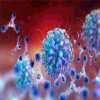 Launch apps instantly. Claim $200 credits on DigitalOcean
Launch apps instantly. Claim $200 credits on DigitalOcean
Comparison and Analysis of SMDC, ADC, and DAC
Written by Alex Brown » Updated on: March 26th, 2024

In order to more effectively deliver chemotherapy drugs, Small Molecule Drug Conjugates (SMDC), Antibody Drug Conjugates (ADC), and Degradation Antibody Conjugates (DAC) have been successively explored and developed, enhancing the therapeutic index while providing selective delivery. What are their similarities and differences? What are their respective advantages? What is the current status of research and development? What are the prospects? This article analyzes each aspect.
Definitions
SMDC consists of a small molecule drug (usually a highly active chemotherapy drug) and a targeting ligand (usually a small molecule), connected through conjugation technology. This conjugate can selectively deliver the drug to disease-related cells, such as cancer cells, thereby increasing efficacy and reducing toxicity to normal tissues.
ADC is a complex composed of an antibody and a drug (usually a cytotoxic drug). The antibody component specifically targets surface antigens on specific cancer cells, while the drug component is responsible for killing these bound cancer cells. The design goal of ADC is to deliver the drug directly to cancer cells, thereby minimizing the impact on normal cells.
DAC is an emerging drug design that combines the targeting ability of antibodies with small molecules used to induce protein degradation. The antibody portion targets specific proteins, while the degradation agent prompts the cell’s degradation system to recognize and eliminate these proteins. The purpose of DAC is to treat diseases by targeting and degrading pathological proteins, such as degrading key proteins on the surface of tumor cells in cancer treatment.
Common Features of SMDC, ADC, and DAC
SMDC, ADC, and DAC all utilize advanced structure optimization techniques, combining the active ingredients of drugs with targeted strategies that enhance drug specificity, providing more precise and effective methods for disease treatment.
Targeting: SMDC, ADC, and DAC all possess targeting capabilities, using specific molecules (antibodies or small molecules) to precisely target disease-related cells or proteins. This targeting reduces the impact on normal cells, enhancing the specificity and effectiveness of treatment.
Composition of Conjugates: They are all composite drugs formed by the combination of two or more different components. Whether SMDC, ADC, or DAC, they include active ingredients for treatment (such as chemotherapy drugs or degradation agents) and guiding molecules (such as antibodies or small molecules) to direct the drug to specific targets.
Mainly Used for Cancer Treatment: SMDC, ADC, and DAC are primarily used for cancer treatment. They reduce tumor growth or promote the death of tumor cells by targeting cancer cells or specific proteins associated with cancer progression.
Innovative Biotechnological Products: SMDC, ADC, and DAC are products of recent biotechnological developments, representing advanced technologies and innovative approaches in drug discovery and cancer treatment.
Part of Personalized Medicine: The development and use of these drugs align with the trend of personalized medicine, selecting the most suitable treatment method based on the specific pathological characteristics and gene expression of individual patients.
Unique Advantages of SMDC, ADC, and DAC
The three types of drug conjugates share common advantages in improving drug targeting, reducing side effects, and treating refractory diseases. However, each conjugate has its unique advantages, allowing them to play crucial roles in different treatment scenarios.
Common Advantages
Targeted Therapy: All three conjugates can provide more precise targeted treatment, effectively locating lesion cells compared to traditional therapies, and minimizing damage to normal cells.
Reduced Side Effects: Due to their targeting capabilities, these conjugates can enhance drug efficacy while reducing toxicity and side effects.
Treatment of Refractory Diseases: They offer new approaches to treating some refractory diseases, such as certain types of cancer.
Special Advantages of SMDC
Small Molecule Characteristics: The small molecule nature of SMDC allows for easier penetration into the interior of cells to target intracellular points.
Cost Advantage: Compared to ADC and DAC, SMDC typically has lower production costs, making it more suitable for large-scale production.
Special Advantages of ADC
High Specificity: The highly specific antibody component enables ADC to precisely target specific cell surface antigens.
High Drug Payload: ADC can carry higher doses of drugs, enhancing therapeutic effectiveness.
Wide Applicability: ADC has widespread applications in cancer treatment, with several ADC drugs already on the market or in development.
Special Advantages of DAC
Novel Mechanism: DAC works by degrading target proteins, presenting a new therapeutic strategy distinct from traditional drug mechanisms.
Resistance Avoidance: Treating diseases by degrading target proteins may help avoid resistance issues associated with certain drugs.
Broad Applicability: In theory, DAC can target a variety of different protein targets, offering a wide range of potential applications.
Design and Mechanism Comparison of SMDC, ADC, and DAC
These three drugs exhibit significant differences in carrier type, mechanism of action, drug release, and clinical applications.
Carrier Type
SMDC: Utilizes small molecule compounds as carriers, which can more easily penetrate cell membranes and tissue barriers.
ADC: Employs antibodies as carriers, which are large molecular biological agents capable of specifically recognizing and binding to particular antigens.
DAC: Also uses antibodies as carriers, but its purpose is to deliver attached degradation agents to specific proteins, triggering their degradation.
Mechanism of Action
SMDC: Delivers drugs into cells through the high permeability of small molecules, typically targeting intracellular sites.
ADC: Directly delivers chemotherapy drugs to cancer cells through the targeting specificity of antibodies. The antibody identifies and binds to specific antigens on the cancer cell surface, leading to internalization, drug release, and subsequent killing of cancer cells.
DAC: Recognizes and binds to specific cell surface proteins through antibodies, then triggers the protein degradation mechanism inside cells using the attached degradation agent, resulting in the degradation of the target protein.
Drug Release and Mechanism of Activity
SMDC: Drug release relies on the intracellular penetration of small molecule carriers, which enhances drug distribution and permeability in the body, allowing the drug to reach the target more effectively.
ADC: Drug release depends on the binding and internalization of antibodies with cancer cells. The antibody delivers the drug directly to targeted cancer cells, and the drug is released inside the cells, commonly used to kill cancer cells.
DAC: The mechanism of activity is based on the degradation agent-induced degradation of the target protein.
Clinical Applications and Treatment Targets
SMDC: Suitable for situations requiring drug penetration into cells or tissues, such as certain types of cancers.
ADC: Primarily used in cancer treatment, especially in scenarios requiring precise targeting of tumor cells.
DAC: Mainly employed in treating cancer or other diseases by degrading key proteins.
Copyright © 2024 IndiBlogHub.com Hosted on Digital Ocean









Post a Comment
To leave a comment, please Login or Register